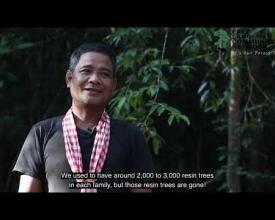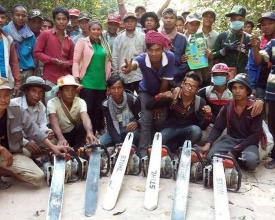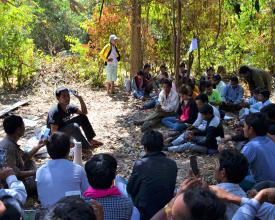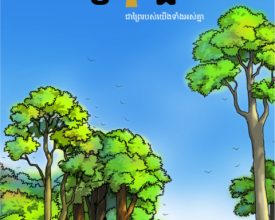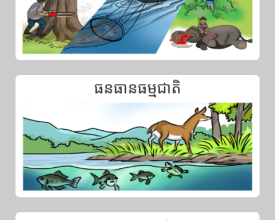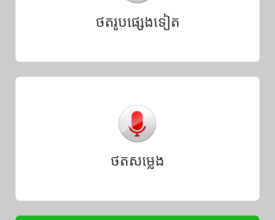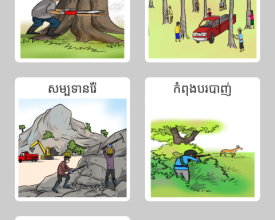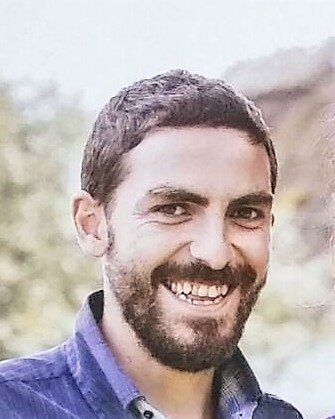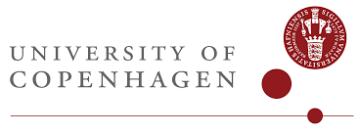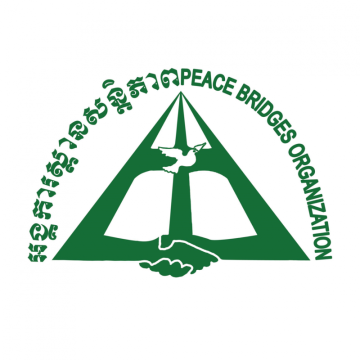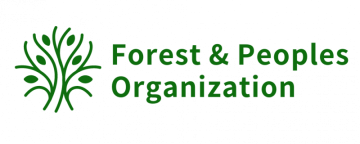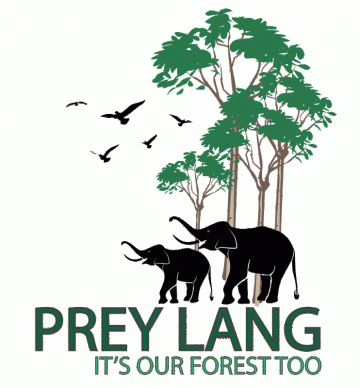
Prey Lang: It's our forest too
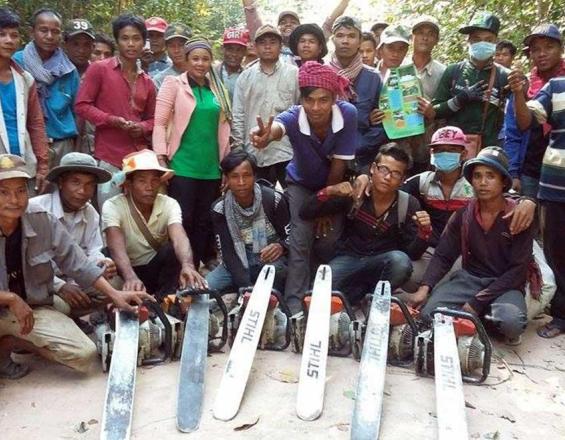
PLCN is a network of indigenous communities living in and around the Prey Lang forest. Since 2007 PLCN has advocated against illegal logging and large-scale, government-sanctioned land grabbing on their ancestral lands. With an emphasis on peaceful, non-violent actions, PLCN has engaged civil society, indigenous associations, commune and district authorities, NGOs and research institutions in a joint movement for environmental justice and sustainable development. The core of PLCN’s work is to patrol the forest, document forest crimes and advocate for the long-term protection of Prey Lang.
PLCN helped developing an app for smartphones, making it easy for local patrols to geo-reference, document, and upload information about forest resources, threatened biodiversity, and illegal activities. The data is used to document the importance of the forest to local livelihoods, international biodiversity conservation, and to report illegal activities to the authorities.
Contexte
Challenges addressed
-Enabling environment
Forest monitoring is primarily restricted by a lack of enabling environment by the government. The shrinking civil space in Cambodia has affected PLCN in a number of ways. Most recently, after publishing the latest report in January 2020, PLCN is banned from entering the forest for patrols and received numerous threats of arrest, giving an incremental raise in logging activities. The extreme amounts of corruption in the country make it hard to with local rangers, that are usually bribed to let illegally logged wood out of Prey Lang.
-Deforestation and illegal logging
The Prey Lang (PL) forest faces illegal logging, forest clearing for agriculture, and land grabbing. As a result of forest conversion and degradation, all larger mammals and birds have become rarer and all valuable timber species have decreased in numbers: a lot of them being listed as endangered species. Economic land concessions adjacent to PL are the main problem as illegal timber is laundered through them.
Emplacement
Traiter
Summary of the process
Communities are at the core of the action. The rest of the partnership is there to support the needs and the wishes of the communities. The technology part provides the tools that communities need in order to achieve their goals (Ensuring forest protection, raising awareness, informing the general public, enforcing the protected area status and exposing the problems).
One can imagine the action as three concentric circles: PLCN and communities are in the central circle, supporting local organizations are in the bigger one while international organizations are in the outermost circle enabling the partnership, funding, and data dissemination.
Building Blocks
Forest monitoring application
PLCN and partners developed an application for smartphones (the Prey Lang app), making it easy for local patrols to geo-reference, document, and upload information about forest resources, threatened biodiversity, and illegal activities. The data is used to document the importance of the forest to local livelihoods, international biodiversity conservation, and to report illegal activities to the authorities.
The Prey Lang app enables systematic data collection during patrols on valuable resources and the effects of illegal activities on biodiversity and the local livelihoods. Documentation is substantiated with GPS coordinates, photos and audio information.
The collected data is uploaded to a database, which can be accessed in Cambodia and by the University of Copenhagen. A database manager in coordination with students and researchers compile reports on the status of Prey Lang which are released at press conferences and published on the internet and via social media. Recently, a climate component has been added, enabling the patrollers to record signs of climate change and climate mitigation actions. In the latest version of the app a component to enhance the security of the patrollers was added. The new functionality allows PLCN members to report threats and instances of violence.
Enabling factors
- The desire of communities to protect their ancestral lands
- The positioning of the communities in the core of the project: listening and delivering to their needs
- The presence of a structured organization
- The fact that patrolling activities were ongoing before the inception of the project.
-The existence of Sappeli (an open-source project that facilitates data collection across language or literacy barriers through highly configurable icon-driven user interfaces.)
Lesson learned
- Listen to the needs of the communities
- Streamlined Data Collection & Submission
- Data Quality Assurance
- Simple User Experience
- User protection
An innovative partnership
New forms of civil society are emerging in Cambodia including more informal social movements that are at the forefront of delivering change. New ways of communicating are explored by these groups who use a variety of new technologies, most notably mobile phones, Facebook, and Youtube. This is the case with PLCN as well.
Until recently, patrolling and documenting illegal logging was difficult and expensive due to the vast area with little infrastructure and lack of communication. To address this problem, an innovative partnership “Prey Lang: It’s Our Forest Too” was formed between PLCN, a social movement Community Peacebuilding Network (CPN), a peacebuilding organization Peace Bridges Organisation (PBO), the University of Copenhagen (KU), a Danish development organization (Danmission), and a local IT company (Web Essentials) in 2014. At a later stage, more organizations joined the initiative: The Cambodian Youth Network (CYN) as a youth activities support group and the Forest & Peoples Organization, an organization to support the data collection and dissemination as well as the communication of the results of the forest monitoring.
Enabling factors
- The core of the initiative being the communities themselves with a number of local supporting organizations
- The support from international organizations
- Capacity development
- Peaceful conflict resolution
- Citizen science approach
Lesson learned
- Intersection of science and conservation (forest monitoring for conservation AND scientific outputs
- Data ownership promotes community empowerment
- Local network of organizations important for community mobilization and capacity building
- International organizations important for networking, data dissemination, and raising awareness of the issues at the global level.
- Non-violent approach
Impacts
Regional and local patrols have been conducted with the participation of hundreds of community members. Illegally felled timber has been burned. Chainsaws and other logging equipment have been confiscated, and reports filed. PLCN’s advocacy led to Cambodia’s government drafting a sub-decree to gazette Prey Lang as Protected Forest. PLCN has organized consultations from the village to the national level to inform the process. PLCN has communicated the importance of environmental protection effectively at the national and international levels empowered by the use of smartphones. PLCN has been instrumental in slowing forest destruction in Prey Lang forest, the largest primary lowland evergreen forest in Indochina. The effort made by PLCN to preserve the forest habitat has importance for wildlife protection and environmental conservation for the whole region. PLCN promotes the traditional and sustainable tapping of resin trees, which has been shown to generate income and secure livelihoods locally.
The effort made by PLCN to preserve this large vestige of primary rainforest is an important contribution to reduce emissions from deforestation and forest degradation (REDD) in Cambodia and supports national and international policies to mitigate climate change.
Beneficiaries
An estimated 200,000 people, mostly indigenous Kuy, live in and around Prey Lang. Another 700,000 live within 10 km of the forest and many of them also depend on it for their livelihoods via the local economy
Sustainable Development Goals
Story
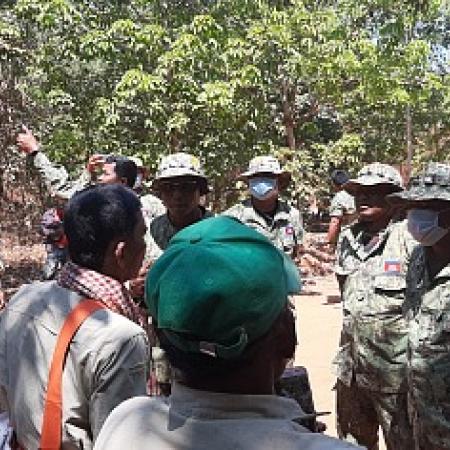
In February 2020, communities intended to enter Prey Lang Wildlife Sanctuary together with Buddhist monks to perform their annual ceremony: A mix of Buddhist and animist cultures praying and praising the forest and its spirits and conduct a tree-blessing ceremony. Instead, the communities were denied access and threatened with arrest.
Local authorities told them they couldn’t enter because they didn’t have permission from the Cambodian Ministry of Environment, but the communities suspect another reason:
“If the PLCN goes there, we’ll collect and publish evidence, and then the world would know about the deforestation and destruction happening even in the protected area,” they said.

